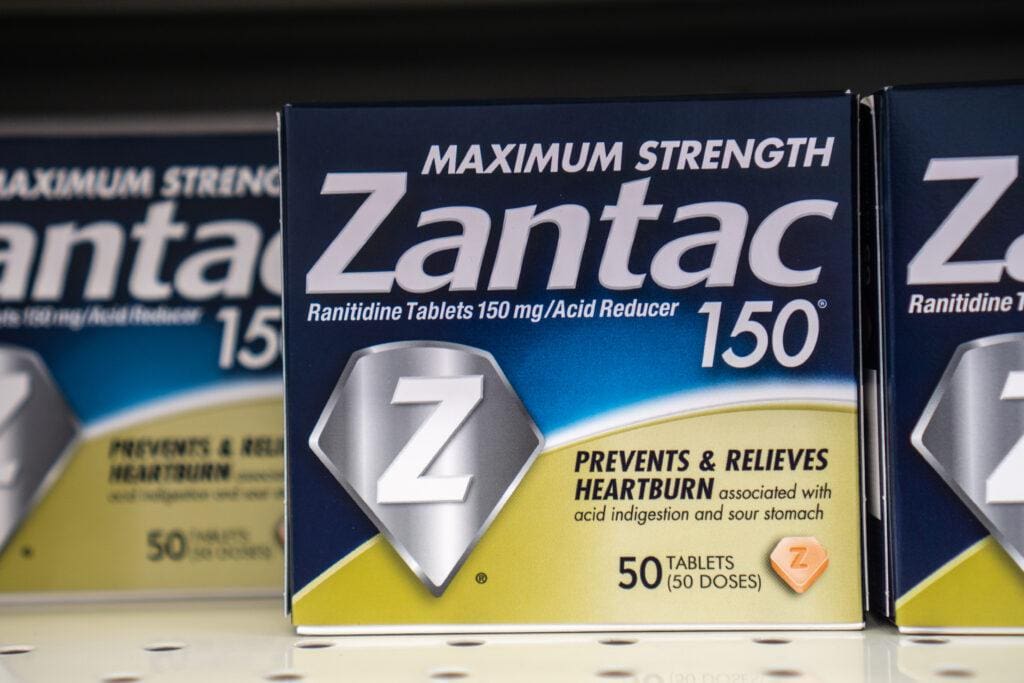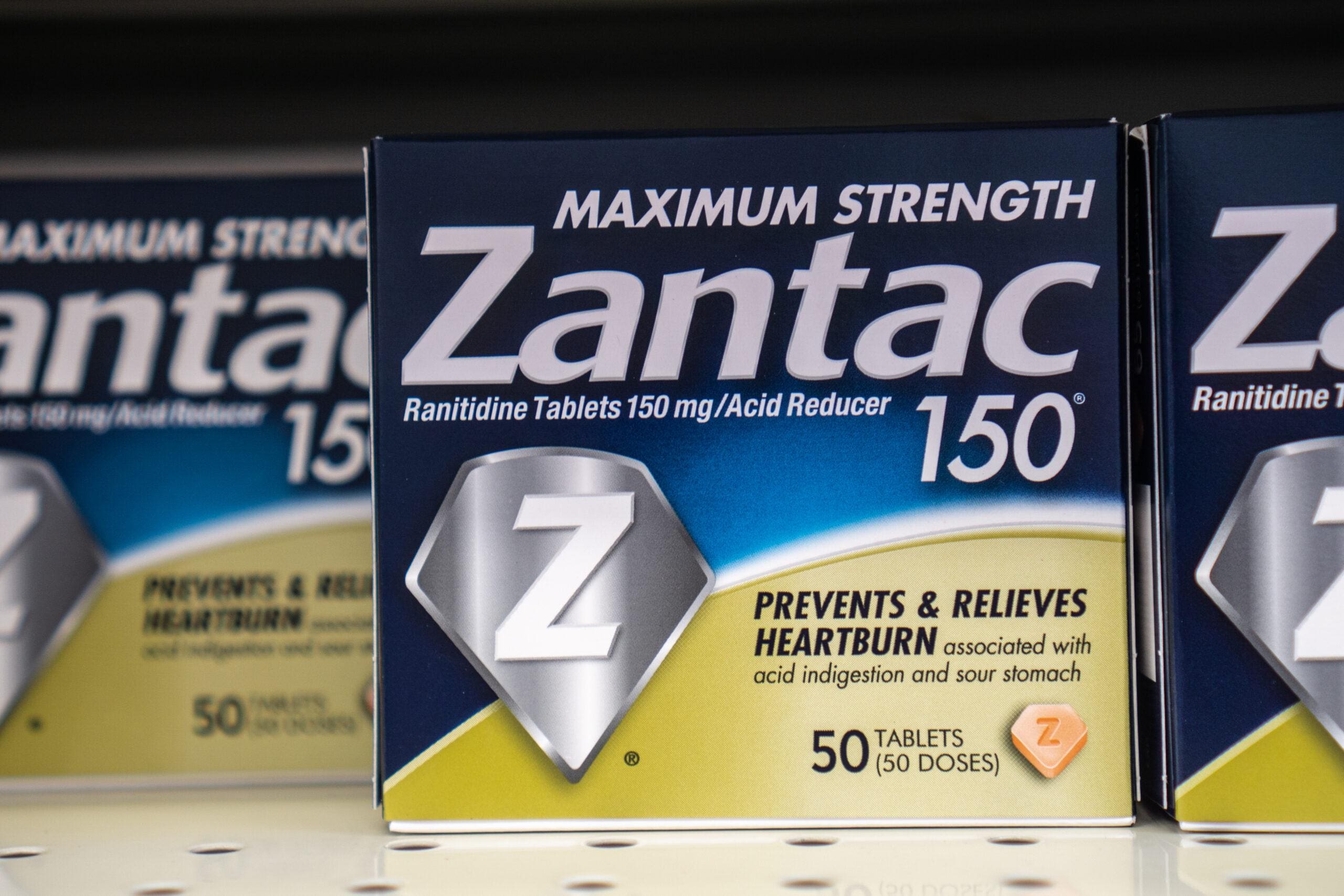Posted by : ZeroRisk Cases Marketing
Those who use Zantac may develop cancer as a result. The medication’s problem is possible contamination with a cancer-causing chemical compound. In 1988 it was one of the world’s best-selling drugs, but by 2020 it was pulled from the market due to the presence of a highly toxic substance. Those harmed by Zantac may file legal claims to obtain compensation for what they suffered.
What is Zantac?
Zantac (whose active ingredient is ranitidine) decreases stomach acid production. It’s not an antacid that neutralizes stomach acid like Tums. Zantac is an H2 (histamine-2) blocker. It hinders stomach acid production by blocking histamine, a chemical that stimulates stomach acid production. Ranitidine received FDA approval in 1984. The pharmaceutical company Sanofi makes Zantac. Boehringer Ingelheim made it in the past.

What are Zantac’s Uses?
It may improve symptoms of too much acid in the stomach (hyperacidity), one of the causes of:
- Heartburn: Stomach acid backs up into the esophagus, causing chest and throat pain
- Erosive esophagitis: The esophagus is the tube from the throat to the stomach. Esophagitis is the inflammation, irritation, or swelling of its lining
- Gastroesophageal reflux disease (GERD): The sphincter between the esophagus and stomach weakens, allowing stomach acid and food to flow into the esophagus
Zantac also treats gastric and duodenal ulcers. Ulcers are sores on your stomach lining (gastric) or on the upper part of the intestine (duodenal).
How are Zantac Users Exposed to a Cancer-Causing Compound?
European and American regulators in 2018 recalled the blood pressure drug valsartan made by China’s Zhejiang Huahai Pharmaceuticals after they found the cancer-causing chemical compound N-nitrosodimethylamine (NDMA) in ranitidine-containing drug samples. Ranitidine is Zantac’s active ingredient.
The problem appears to be Zantac’s chemically unstable nature. When the drug leaves the production facility, it may not have NDMA. But over time it breaks down and creates NDMA, especially if the drug is exposed to higher temperatures.
What Injuries Could Result From Zantac Use?
“There is conclusive evidence that NDMA is a potent carcinogen in experimental animals by
several routes of exposure…” according to the World Health Organization. In those animal studies, the chemical is linked to liver and lung cancers. In NDMA-related lawsuits, plaintiffs claim many cancers, including esophageal, bladder, gastric, liver, pancreatic, colorectal, and others.
A 2015 study found consuming more nitrites, nitrates, and NDMA is associated with an increased risk of gastric cancer. Those consuming higher levels of these chemicals had a 35% greater cancer risk.
Another study published four years later showed a link between increased NDMA consumption and pancreatic cancer. This is based on answers to questionnaires about how often two groups of people, one with pancreatic cancer and one without, ate foods high in NDMA. Researchers estimated those with a higher NDMA intake had a 93% greater chance of developing pancreatic cancer.
What are Zantac’s Risks and Warnings?
In addition to the studies discussed above, in 2019:
- US and European drug regulators announced they were reviewing ranitidine’s safety
- Novartis AG’s Sandoz stopped distributing generic versions of Zantac
- Canada’s government asked drugmakers that sold ranitidine to stop distributing it
- CVS Health Corp stopped selling Zantac and its generic versions. Walmart Inc, Walgreens, and Rite Aid removed the drugs from their shelves
- The FDA announced it found “unacceptable levels” of NDMA in ranitidine samples
- GlaxoSmithKline, the first Zantac maker, recalled its prescription Zantac medications
- Sanofi recalled over-the-counter Zantac in the US and Canada
The FDA in 2020 officially requested all Zantac and ranitidine products not be sold in the US. It stated that those using the medication should stop and find an alternative. The FDA confirmed ranitidine products it tested had high amounts of NDMA and stated those levels could increase over time at room temperature.
Sanofi, in April 2021, started selling a different, over-the-counter formulation for Zantac. Zantac 360’s active ingredient is famotidine, is used by another brand, Pepcid AC. Famotidine, like ranitidine, controls acid production in the body and is considered an H2 blocker.
Zantac Lawsuits
A multi-district litigation (MDL) order organizes federal cases involving Zantac. The cases are pending in the US District Court for the Southern District of Florida. There are many court orders. The most recent ones involve discovery issues.
As of late 2021, it’s estimated there were about 1,800 cases. A procedural mechanism protects the rights of at least another 70,000 plaintiffs who haven’t filed a lawsuit yet. The MDL is limited to lawsuits alleging bladder, liver, pancreas, stomach, and esophageal cancers. If the current schedule holds, bellwether cases could go to trial in early 2023.
The lawsuits claim defendants knew or should’ve known about the NDMA contamination but failed to warn consumers of the problem. Defendants are accused of making and selling a dangerous, defective product that harmed the plaintiffs.
Purpose
- Decrease stomach acid production
Side Effects
- A contaminant may increase the risk of several cancers
Timeline
- October 1984: FDA approves of Zantac’s active ingredient
- September 2019: FDA finds carcinogen (NDMA) in Zantac samples
- October 2019: Sanofi recalls over-the-counter Zantac
- February 2020: Federal Zantac lawsuits are consolidated into an MDL
- April 2020: FDA asks Zantac makers to recall their products
- April 2021: The MDL contains more than 500 cases
- 2023: Bellwether trials are expected to start
Ed Lott, Ph.D., M.B.A.
President and Managing Partner
ZeroRisk Cases®
Call 833-ZERORISK (833-937-6747) ext 5


Recent Posts
- Valsartan Lawsuits Update 2024
- PFAS Litigation Update September 2024
- Latest Developments In Zantac Lawsuit
- EPA Cracks Down On Polyfluoroalkyl Substances PFAS
Categories
- Camp Lejeune
- Client Acquistion
- Client Financing
- Company Business
- Daily Dose of Law
- Digital Display Advertising
- Google Maps Ranking
- Human Trafficking
- Law Firm Info
- Lead Generation
- Litigation Funding
- Mass Tort News
- Mass Tort Signed Cases
- Personal Injury Leads
- Sex Abuse Cases
Archives
- September 2024
- July 2024
- June 2024
- May 2024
- April 2024
- February 2024
- January 2024
- December 2023
- November 2023
- October 2023
- September 2023
- August 2023
- July 2023
- January 2023
- December 2022
- November 2022
- October 2022
- September 2022
- August 2022
- June 2022
- May 2022
- April 2022
- March 2022
- February 2022
- January 2022
- December 2021
- November 2021
- October 2021